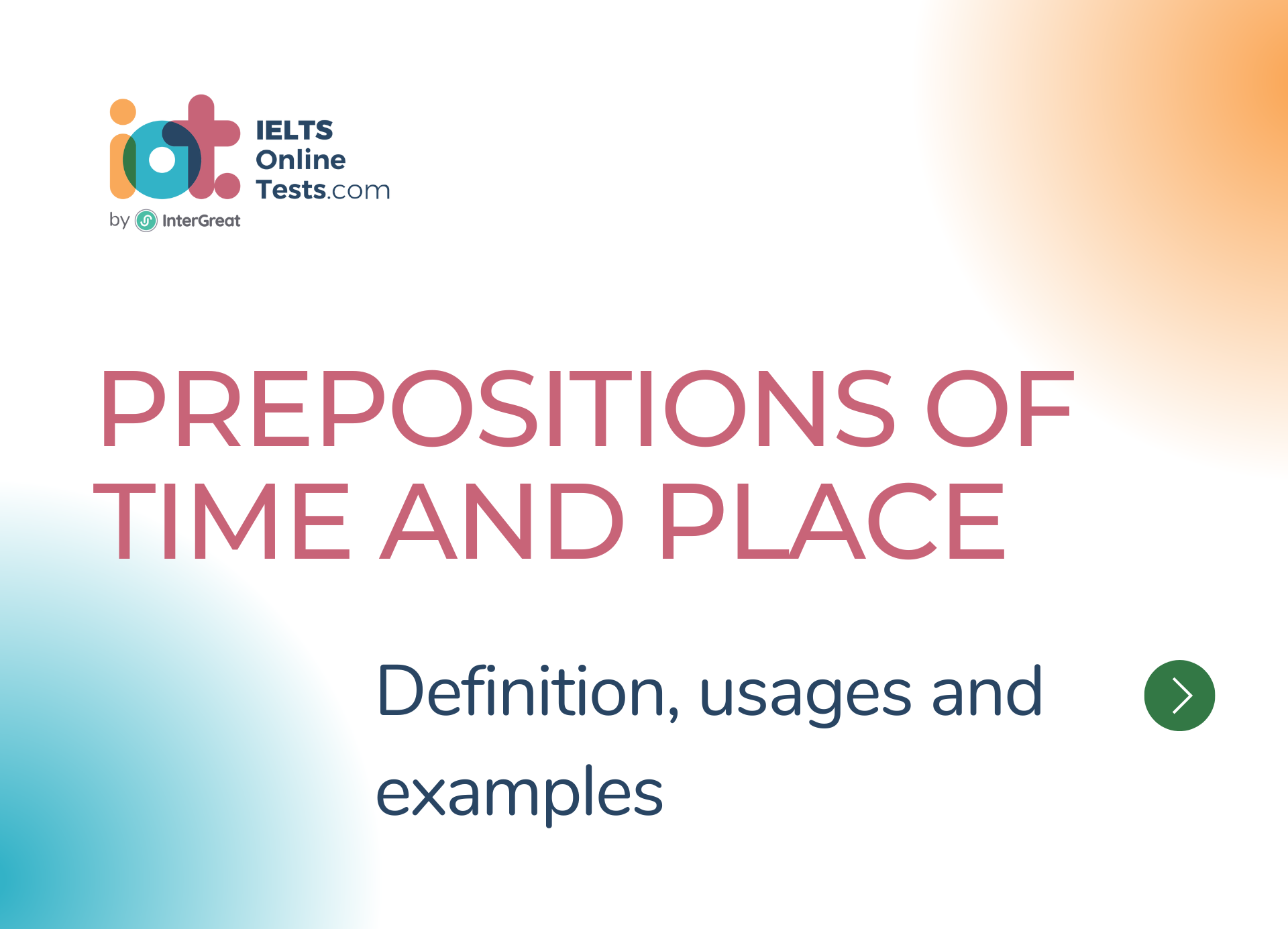
Prepositions of Time and Place
Prepositions of time and place are used to indicate specific time or location relationships in a sentence.
Here's some information about each:
PREPOSITIONS OF TIME:
Examples: Some common prepositions of time include "in," "on," "at," "during," "before," "after," "since," and "until."
Usage:
- "In" is used for general time periods, months, years, and longer durations.
- For example:
- "in the morning,"
- "in July,"
- "in 2022."
- For example:
- "On" is used for specific days, dates, and weekdays.
- For example:
- "on Monday,"
- "on June 5th,"
- "on Christmas Day."
- For example:
- "At" is used for precise points in time, specific hours, and times of the day.
- For example:
- "at 8 o'clock,"
- "at noon,"
- "at midnight."
- For example:
- "During" is used to indicate a period or event within a specific time frame.
- For example:
- "during the summer,"
- "during the meeting."
- For example:
- "Before" and "after" indicate the order of events or actions.
- For example:
- "before dinner,"
- "after the movie."
- For example:
- "Since" is used to specify the starting point of a time period that continues until the present.
- For example:
- "since yesterday,"
- "since 2010."
- For example:
- "Until" indicates the endpoint or duration until a certain time or event.
- For example:
- "until tomorrow,"
- "until the end of the week."
- For example:
- "In" is used for general time periods, months, years, and longer durations.
PREPOSITIONS OF PLACE:
Examples: Some common prepositions of place include "in," "on," "at," "under," "above," "below," "inside," "outside," "between," and "among."
Usage:
- "In" is used to indicate being within the boundaries or confines of a place.
- For example:
- "in the house,"
- "in the city."
- For example:
- "On" is used to indicate a surface or contact point.
- For example:
- "on the table,"
- "on the floor."
- For example:
- "At" is used to indicate a specific point or location.
- For example:
- "at the park,"
- "at the bus stop."
- For example:
- "Under" denotes being beneath or lower than something.
- For example:
- "under the tree,"
- "under the bridge."
- For example:
- "Above" signifies being higher or over something.
- For example:
- "above the clouds,"
- "above the surface."
- For example:
- "Below" indicates being lower or beneath something.
- For example:
- "below sea level,"
- "below the horizon."
- For example:
- "Inside" refers to being within the interior of something.
- For example:
- "inside the house,"
- "inside the box."
- For example:
- "Outside" denotes being in the exterior or beyond the boundaries of something.
- For example:
- "outside the building,"
- "outside the fence."
- For example:
- "Between" indicates the position or relationship of two objects or people.
- For example:
- "between the two chairs,"
- "between Monday and Tuesday."
- For example:
- "Among" indicates a position or relationship within a group or multiple objects.
- For example:
- "among friends,"
- "among the books."
- For example:
- "In" is used to indicate being within the boundaries or confines of a place.
Understanding these prepositions of time and place will help you accurately convey temporal and spatial relationships in your writing and conversation. It's important to consider the specific context and usage patterns to use these prepositions effectively.




